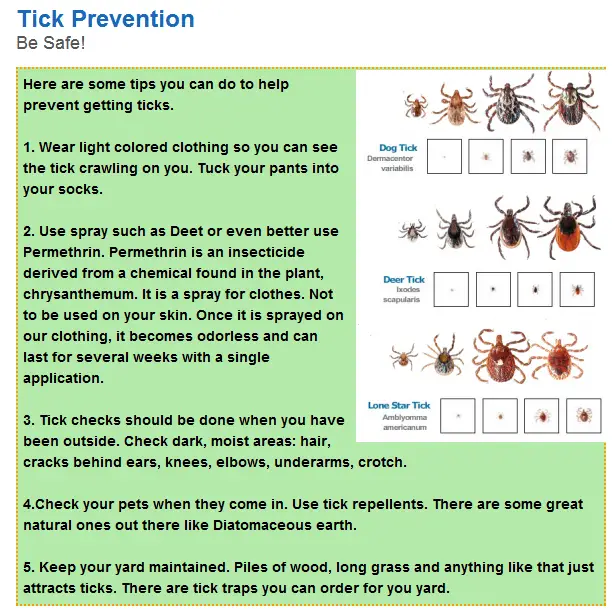Tick Paralysis Life Cycle
The eastern paralysis tick is the primary cause of tick paralysis in Australia. It is found along the east coast from North Queensland to Victoria. The life cycle of the paralysis tick has four stages: eggs, larvae , nymphs and adults. It is adult female ticks that primarily cause tick paralysis. Numbers of adult ticks peak in the spring and early summer which is why this is the highest risk period, although tick paralysis can occur all year round.
How To Treat Dog Eye Infection
Dog Eye Infection Treatment
Can Lyme Disease Be Transmitted From Pet To Pet
Lyme disease is seen in dogs, cats, and humans but thankfully, no, Lyme disease is not contagious, as it can only be transmitted via a tick bite. However, if one of your dogs or cats develops it, youll want to get all of your pets checked for the illness, as they may all be at risk of exposure to the ticks that infected your sick fur baby. You may even want to get yourself checked as well, as people are usually in the same places as their pets.
Also Check: Uti Comes Back Right After Antibiotics
How To Prevent Tick Bites
If you live in a region where ticks are prevalent, check your dog every time you come in from the outdoors, especially after romps through wooded areas. There are also several different types of oral and topical preventative medications that help prevent ticks from biting a dog. Ask your veterinarian to recommend a tick preventative that will work best for your dog.
The Spruce / Theresa Chiechi
How Do You Remove A Tick From A Dog

If youve discovered a tick on your dog, it should be removed immediately to avoid a skin reaction and to reduce the likelihood of developing a tick-borne infectious disease. Diseases can be transmitted to your dog in as quickly as a few hours.
Grasp the head of the tick with a pair of flat or curved forceps or tweezers. They should be held as close to the skin of your dog as possible. Avoid squeezing the tick!
Using steady, gentle pressure, pull the head of the tick away from the skin without twisting.
The site of the bite should be cleaned with soap and water.
You can save the tick in a container with a tight-fitting lid if you would like to have it identified by your veterinarian.
Read Also: Can I Take Excedrin With Antibiotics
Ticks Need One To Two Days To Pass On Lyme Disease
A tick has to be attached to your dog for 24-48 hours before infecting your pet. However, most Lyme disease in dogs is subclinical, meaning we do not see obvious signs of infection. When a dog does show symptoms, we can see signs such as fever, joint pain, enlarged lymph nodes, and decreased appetite in the early phase.
Symptoms Of Tick Fever In Dogs
Once your dog is infected by the bacteria it can take up to 14 days for symptoms to begin to show. The symptoms of tick fever in dogs are somewhat vague and extremely varied in nature making a diagnosis of tick fever challenging in some cases. Some of the most common symptoms of tick fever in dogs include:
- Fever up to 105°F
- Loss of appetite
- Breathing difficulties
In more severe cases dogs may exhibit round, purplish-red spots inside of the eyelids and mouth caused by bleeding below the surface. About 30% of dogs will experience central nervous system symptoms such as:
- Altered mental states
- Impaired balance
- Painful spinal sensitivity
Pet parents should always take symptoms of tick fever seriously. Up to 10% of dogs suffering from tick fever die from the condition. If your dog is showing any of the signs of tick fever listed above book a veterinary examination for your dog right away!
Recommended Reading: What Kind Of Antibiotics Treat Strep Throat
Can Ticks Cause Diarrhea In Dogs
Ticks can indeed cause diarrhea in dogs if they are infected with certain diseases. This is known as vector-borne disease, where a parasite transfers bacteria, viruses, or other agents to the host animal through its bite. In this case, it would be the tick bite that transfers the organisms that lead to diarrhea in dogs.
The most common types of vector-borne diseases associated with ticks and resulting in canine diarrhea are Ehrlichiosis and Anaplasmosis. These are caused by a group of parasitic organisms called rickettsia and Anaplasma species respectively. These organisms inhabit the cells of their tick host before being transferred to another animal via bites from infected ticks. Symptoms vary depending on which disease is present but for both Ehrlichiosis and Anaplasmosis, among other organ damage or malfunctioning of vital systems within the dogs body generally includes vomiting, fever and/or loss of appetite along with severe watery bowel movements or diarrhea symptoms sometimes accompanied by blood.
Learn More: What to do my dog killed my other dog?
The Symptoms Of Ticks On Dogs
The signs and symptoms of ticks being present on dogs will vary depending on the type of tick involved.
Brown dog tick symptoms may include irritation of the skin or anaemia. Paralysis tick symptoms in dogs, however, may include one or more of the following signs :
- A loss of coordination in the hind legs which may progress to paralysis.
- A change in voice or bark.
- You may notice your dog vomiting after a tick bite.
- Retching, coughing or loss of appetite.
- Laboured breathing or rapid breathing.
- You may notice that your dog is lethargic after a tick bite.
Should you notice symptoms of a tick bite in your dog, you should seek immediate veterinary attention.
Read Also: Non Prescription Antibiotics For Tooth Infection
How Do You Treat Lyme Disease In Dogs
Treating Lyme disease in dogs is typically as simple as visiting your vet to get a prescription for antibiotics. 4 weeks of antibiotics will typically get rid of Lyme disease in dogs, which is why its important to get a diagnosis as early as possible.
Depending on the case, Lyme disease may require additional treatment. Lyme disease can cause long-term complications including joint and limb problems, heart problems, kidney problems, and nervous system problems. If your dog has any of these complications as a result of Lyme disease, you should talk to your vet about long-term treatment options.
What Is The Best Antibiotic For A Dog
The best antibiotic for your dog depends on the location of the bacterial infection, allergies, diet, any current medications, and medication-taking preferences. Some medications are available in chewable flavored tablets, capsules, and liquids, while others are only available in capsule form, which some dogs struggle to take. If youre trying to determine the best antibiotic for your pup, talk with your vet.
Don’t Miss: Antibiotics For Uti In Men
What Is The Best Time Of Day To Take Doxycycline
The best time of day to take doxycycline is 1 to 2 hours before meals. Some doxycycline prescriptions are prescribed twice a day, once in the morning and once in the evening. It is best to take these 1 to 2 hours before meals. For example, if you eat breakfast at 9:00 am, then it is best to take the dose between 7 and 8 am. If you usually eat dinner at 7:00 pm, then you should take the dose between 5 and 6 pm.
Taking doxycycline with a meal can decrease its effectiveness and decrease serum levels in the body. This means that if taken with a high-fat meal or milk, it may not work as intended and fight bacteria unsuccessfully. In addition, if you take oral contraceptives for birth control, doxycycline may cause your birth control to be less effective, so a back-up method is recommended while taking doxycycline.
Administration with iron or calcium may also decrease absorption of doxycycline. Food with high iron and calcium include:
- Tightness in chest or throat
- Swelling of face, lips, or tongue
Lyme Disease Prophylaxis After Tick Bite

In areas that are highly endemic for Lyme disease, a single prophylactic dose of doxycycline may be used to reduce the risk of acquiring Lyme disease after a high-risk tick bite.
Benefits of prophylaxis may outweigh risks when all of the following circumstances are present:
Flat
Nymph
Adult
Antibiotic treatment following a tick bite is not recommended as a means to prevent anaplasmosis, babesiosis, ehrlichiosis, Rocky Mountain spotted fever, or other rickettsial diseases. Instead, persons who experience a tick bite should be alert for symptoms suggestive of tickborne illness and consult a physician if fever, rash, or other symptoms of concern develop.
You May Like: How To Get Rid Of A Toe Infection Without Antibiotics
Other Diagnostic Tests For Lyme Disease
For dogs showing active signs of disease, joint cytology can be helpful. Tapping 3 or 4 joints is recommended. In dogs with active disease, nondegenerative neutrophils in joint fluid may be increased. Culturing joint fluid to look for B burgdorferi bacteria is difficult and takes a long time thus, culture is not recommended.1
Other diagnostic tests that can be performed on symptomatic dogs include blood chemistry analysis, which may indicate azotemia or markedly decreased albumin. A complete blood count might show mild to marked thrombocytopenia and, if the dog has nephritis, mild to moderate anemia and leukocytosis. For dogs with nephritis, a urinalysis may show isothenuria and proteinuria.1
The American College of Veterinary Internal Medicine Consensus group recommends routinely testing dogs in Lyme diseaseendemic areas for antibodies by using an in-house screening ELISA, evaluating dogs with a positive ELISA result for signs of joint pain/inflammation, and testing for proteinuria in the urine.3,4
Summary Of Lyme Disease In Dogs
Lyme disease is transmitted via tick bites, and can cause lameness, swollen joints and even kidney failure. While it can be treated if the case is not too severe, prevention is best. The best way to prevent an infection is to reduce your dogs exposure to ticks and stay up-to-date on monthly preventatives and Lyme vaccinations.
You May Like: Urinary Tract Infection Otc Antibiotics
Are There Any Treatments For Dogs With Tick
Tick-borne illnesses in dogs can be serious and even life-threatening if left untreated. Thankfully, there are treatments available for dogs with tick-borne illnesses. Depending on the type of infection, the treatment may range from simple oral medications to complex hospitalization with intravenous antibiotics.
Common tick-borne diseases that can affect dogs include Lyme disease, Rocky Mountain spotted fever, anaplasmosis and ehrlichiosis all of these can cause much discomfort or severe symptoms such as anemia or kidney failure if left untreated. Typically, the earlier a pet is treated for any form of tick-borne illness, the better their chance of making a full recovery.
Beyond drugs & supplements howeveradditional preventive measures should always be taken when it comes reducing potential exposure risks. Regular flea & tick control products help provide direct protection against future infestations by killing off parasitic pests present on your pet’s fur coat before they’re able infect your pup! Additionally making sure all outdoor areas are kept clear from clumped grasses/weeds where ticks gather provide another layer safety net that could play a vital role during times dense vector activity high rate particularly during peak season months July thru September each year!
Testing For Kidney Disease
Tests to diagnose kidney disease include complete blood count, serum biochemistry, and urinalysis. These blood tests will determine if your pet is anemic, determine white blood cell counts, measure blood urea nitrogen, creatinine, and electrolytes. A urinalysis is essential for the proper interpretation of the urea and creatinine values in the serum biochemistry profile and may also provide important clues to the possible underlying cause of kidney disease. A urinalysis will also determine the specific gravity, pH, presence of blood in the urine, and the amount of protein in the urine. An evaluation of the urine sediment will determine the presence of red blood cells, white blood cells, bacteria, crystalline material, and cellular casts all of which provide information to determine the underlying cause of kidney disease in your pet. Further diagnostic tests may be recommended based on the results of these initial screening tests.
Also Check: How To Know If You Need Antibiotics For Sinus Infection
How Do Dogs Get Ticks
So, how do ticks get on dogs in the first place? It will typically be during their adventures in the great outdoors. Ticks quest to find a host, which involves crawling up low grass or shrubs and lying in wait. Ticks are sensitive to heat and the carbon dioxide that your dog exhales, which alerts them that theres a suitable host nearby. When your pet pooch brushes past on a walk or while playing outside, the tick uses its front legs to grab on, then crawls over the coat and through the fur to find a suitable place to attach and feed.
Ticks manage to get on dogs all year round in Australia, but the highest risk is in spring and summer.
How Can I Tell If My Dog Has Been Infected By A Tick
If you suspect your dog has been infected by a tick, it is important to take action as quickly as possible to prevent further complications. Here are some of the symptoms to look out for that could indicate that your dog has a tick-borne illness: Loss of appetite and lethargy: Ticks can cause anemia in dogs which can result in decreased activity and disinterest in food. Changes in coat or skin: If your dog develops spots on its skin, or if their coat suddenly becomes greasy or patchy, this could be an indication of a tick-borne illness. Lameness and joint pain: Some ticks excrete toxins that cause inflammation of the joints and can lead to lameness. If your pet is limping when they werent before, it might be time for a visit with the vet. Frequent coughing or sneezing: Depending on where the tick was attached, there may be respiratory involvement if the infection gets into their lungs or airways. Any repeated episodes of coughing could signal trouble brewing under the surface keep an eye out!If you notice any unusual behaviors from your pup whether they exhibit one symptom at once or several together it’s best to get them checked out by a vet right away! Early diagnosis will help ensure successful treatment plans put into place so that everyone involved in helping care for your pup remains healthy and happy!
Learn More: Why does my dog bite my other dogs neck?
You May Like: Can You Get An Antibiotic Without A Prescription
Lyme Disease Treatment Doxycycline Side Effects
Most patients respond well to this medication. However, doxycycline is known to cause photosensitivity in some people so use of sunscreen is a must. Also avoid strong sunlight exposure as far as possible. To prevent acidity, headaches and nausea it is advisable to drink a tall glass of water with the medicine. Also take the drug with food.
Medicines like amoxicillin and cefuroxime are associated with rashes, diarrhea and other health effects.
What To Expect At The Vets Office

If your pet has been diagnosed with uncomplicated Lyme disease, this is what you can expect to happen at your veterinarians office.
- Depending on the type of test used to screen for Lyme disease, a confirmatory test may be necessary.
- Urine protein screening — In general, only dogs who have symptoms of Lyme disease or protein in their urine should be treated with antibiotics.
- Dogs with protein in their urine should have regularly scheduled rechecks to monitor their condition.
Read Also: Can You Fix Uti Without Antibiotics
Potential Side Effects Of Antibiotics
As with any medication, there are potential side effects to consider, especially if your pet is taking other drugs, vitamins, or supplements that could interact with antibiotics. When you take your dog to the vet, make sure to let the doctor know about any medications, topical treatments, and supplements that your dog is taking.
Some antibiotics may trigger sensitivities or allergies in your pet, too. For example, dogs allergic to penicillin should not take amoxicillin, a common antibiotic for dogs. Side effects can vary from skin irritation and gastrointestinal upset to seizures.
Call your vet or the ASPCA Animal Poison Control Center Phone Number 426-4435 if you suspect your dog is reacting negatively to an antibiotic.
These are some common side effects of antibiotics:
If youre looking to help your dog heal from minor infections or hoping to ease some of their discomforts while you wait for your appointment with a vet, you may try some natural products that have antibacterial properties. While these products arent a substitution for prescribed medications, they may offer some relief with less risk of leading to antibiotic resistance.
Questions To Ask Your Doctor
- I found a tick embedded in my skin, but I cant get it out. What should I do?
- Ive been bitten by a tick. Do I need to be seen?
- Do I need a blood test to confirm Lyme disease?
- Which antibiotic is best for me?
- How long will I have to take the antibiotic?
- What tick or insect repellent should I use for me or my child?
- How long will the symptoms last?
- What should I do if I still dont feel well a long time after I was bitten?
You May Like: Best Antibiotic For Dog Skin Infection
Read Also: How Long For Uti To Go Away With Antibiotics